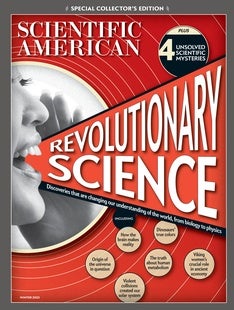 |
| April 18, 2023 |
Squishy gels are great building materials for soft robots. But what if they could conduct electricity as well? Researchers incorporated liquid metal into a gel in order to produce a new substance that is soft, self-healing and electrically conductive. Then they used their new material in a biological monitor, a toy car and a snail-like crawling robot. Read more in this week's top story! |
| | Sophie Bushwick, Associate Editor, Technology | |
 |
| |
| Artificial Intelligence What You Need to Know about GPT-4 The AI GPT-4 has emergent abilities—but that’s not why it’s scary. |  | By Sophie Bushwick,Kelso Harper,Tulika Bose | 09:27 | | | |
| |
| |
| |
| |
| |
| |
| |
FROM THE STORE
 | | | |
| QUOTE OF THE DAY
 "The further automation of swatting techniques threatens to make an already dangerous harassment technique more prevalent." Joseph Cox, Vice | |
FROM THE ARCHIVE
 | | | |
LATEST ISSUES
 |
| |
| Questions? Comments?  | |
| Download the Scientific American App |
| |
| |






















